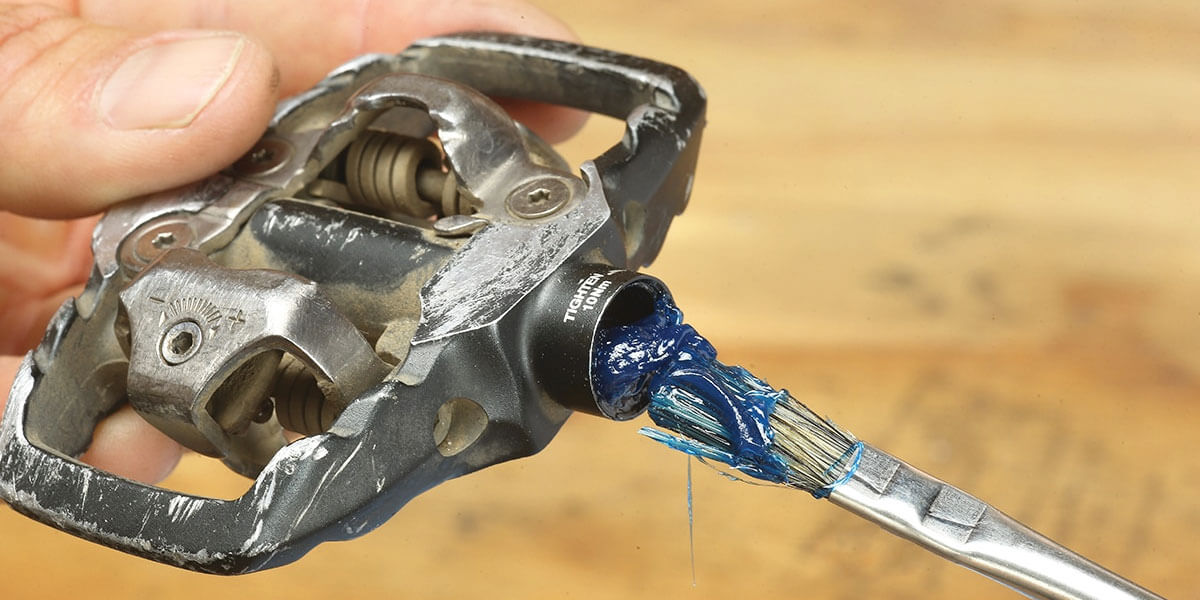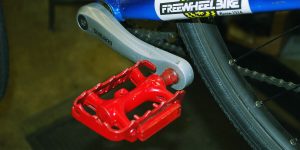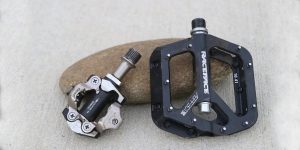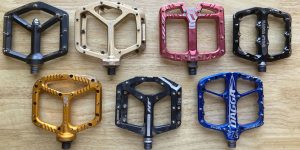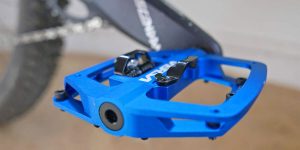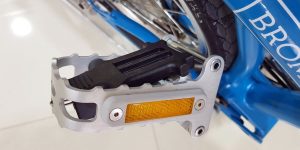When it comes to optimizing the performance and longevity of your bicycle, one important aspect that often goes overlooked is the proper maintenance of its pedals. In this article, I will share the importance of grease for bike pedals, offering valuable insights on lubrication methods and highlighting suitable lubricants for various pedal components. By understanding the significance of pedal lubrication and employing the right techniques, you can ensure smoother rides, prevent unnecessary wear and tear, and extend the lifespan of your bike’s pedals. So let’s pedal into the world of grease for bike pedals and unlock the secrets to enhanced performance and durability.
The significance of greasing bike pedals
Based on my experience, I can claim that if you lubricate bike pedals, it will help to reduce friction, prevent wear and corrosion, and ensure smooth operation. By applying the right lubricant, you can enhance the performance of your pedals, prolong the lifespan of their components, and enjoy a comfortable and efficient cycling experience.
When pedals lack proper lubrication, friction between the moving parts increases. This can lead to stiffness, resistance, and a loss of efficiency in each pedal stroke. Moreover, the absence of lubrication exposes the pedal components to increased wear and tear, which can result in premature damage and costly replacements.
By regularly greasing your bike pedals, you create a protective barrier that minimizes friction and prevents metal-on-metal contact. Additionally, the lubrication helps to repel moisture and prevent rust or corrosion, particularly in wet or humid conditions.
Suitable grease materials for bike pedals
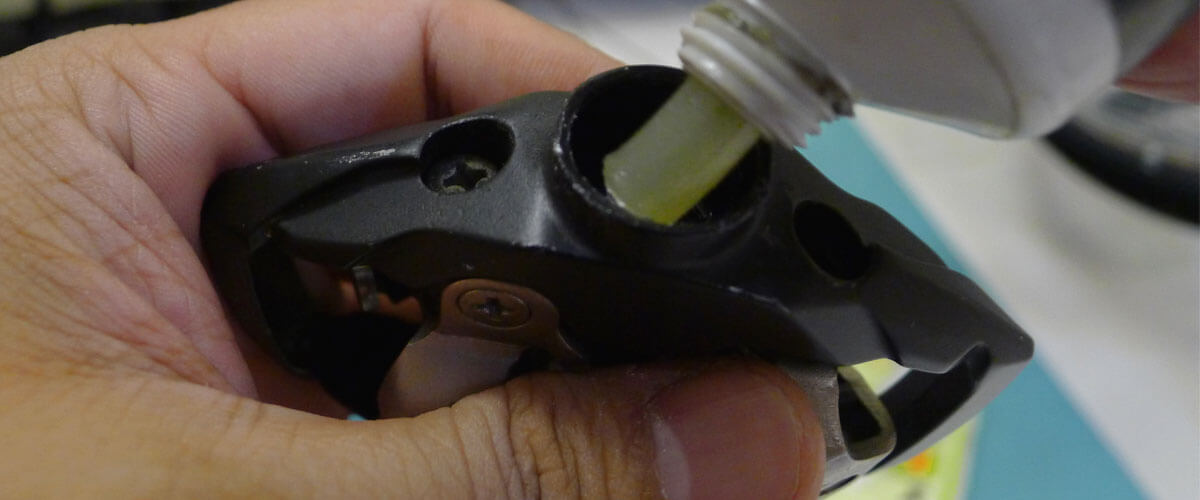
When selecting the right grease for bike pedals, several options are available, each with advantages and considerations. Let’s explore some common types of grease and highlight their characteristics, as well as the situations in which they are most suitable.
| Grease Type | Characteristics | Suitable Situations |
|---|---|---|
| Lithium-based | Versatile, water-resistant, and compatible with various materials | General pedal lubrication, everyday riding |
| Marine | Exceptional water resistance, corrosion protection | Wet or humid riding conditions |
| Ceramic | Enhanced heat resistance, high-load lubrication | Intensive or high-temperature cycling activities |
| Specialty Greases | Synthetic or Teflon-based greases with specific advantages | Targeted performance enhancements for specific pedals |
Greasing techniques for bike pedals
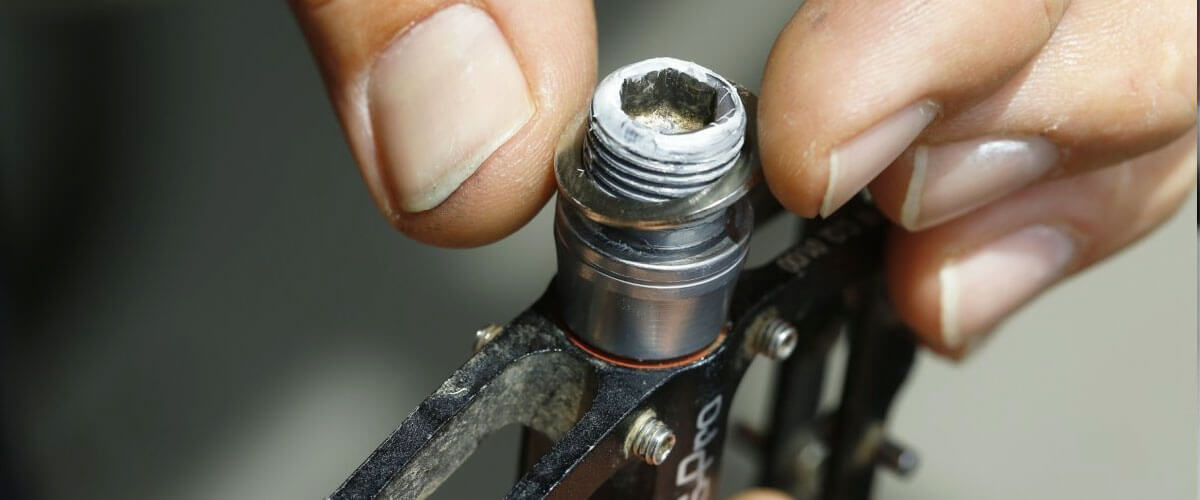
Let’s explore the key steps involved in greasing bike pedals.
- Pedal disassembly. There are situations that may require pedal disassembly for lubrication, such as regular maintenance or addressing pedal issues. It is critical to consult the manufacturer’s recommendations or seek professional assistance, especially for pedals with sealed bearings or complex constructions.
- Cleaning. Before applying fresh grease, it is important to clean the pedal components. Remove dirt, debris, and old grease using a suitable cleaning agent and a soft brush or cloth. A clean surface promotes better grease performance and reduces contamination.
- Grease application. Apply a small amount of grease to threaded surfaces, bearings, and other moving parts. Use an appropriate amount of grease for pedal threads and ensure even distribution to achieve full coverage without excess accumulation.
- Pedal assembly. After greasing, follow these steps for proper reassembly, ensuring all components are securely and correctly positioned. Use a torque wrench to prevent under-tightening or over-tightening, which can affect pedal operation.
- Maintenance and greasing frequency. Recommended greasing frequency may vary based on riding conditions, intensity, and manufacturer’s guidelines. Consult the manufacturer’s recommendations and establish a maintenance schedule to keep your pedals in optimal working condition.
FAQ
What happens if I don’t grease my bike pedals?
If you neglect to grease your bike pedals, several issues can arise. The most common problem is increased friction between the moving parts, which leads to stiffness and reduced efficiency in pedaling. The pedal components can wear out quickly without proper lubrication, leading to premature damage and potential failure.
Can I use WD-40 or other lubricants instead of grease for my pedals?
While WD-40 and other lubricants can temporarily provide some lubrication to bike pedals, they are not ideal substitutes for grease. WD-40 is primarily a water-displacing agent and cleaner rather than a long-lasting lubricant. It tends to be less viscous and may not provide sufficient protection and longevity for pedal components. It is recommended to use a suitable grease specifically designed for bike pedals, as it offers better lubrication, corrosion protection, and longevity.
Is it possible to over-grease my bike pedals?
Yes, it is possible to over-grease bike pedals. Applying excessive grease can lead to the accumulation of excess lubricant, attracting dirt and debris, which can affect performance and cause more harm than good. Excess grease can also create a messy situation and increase the likelihood of it being transferred to other bike parts or your clothing. It is important to apply an appropriate amount of bicycle pedal grease, ensuring even distribution and coverage without excess buildup.
How do I know if my pedals need regreasing?
There are a few signs that indicate your bike pedals may need regreasing. If you notice increased resistance or a rough feeling when pedaling, it could be a sign of inadequate lubrication. Squeaking or creaking noises emanating from the pedals are also indicators that the lubrication may have worn off. Additionally, if you’ve recently ridden in wet or muddy conditions, it’s a good practice to inspect and regrease the pedals as water and dirt can wash away the grease.

